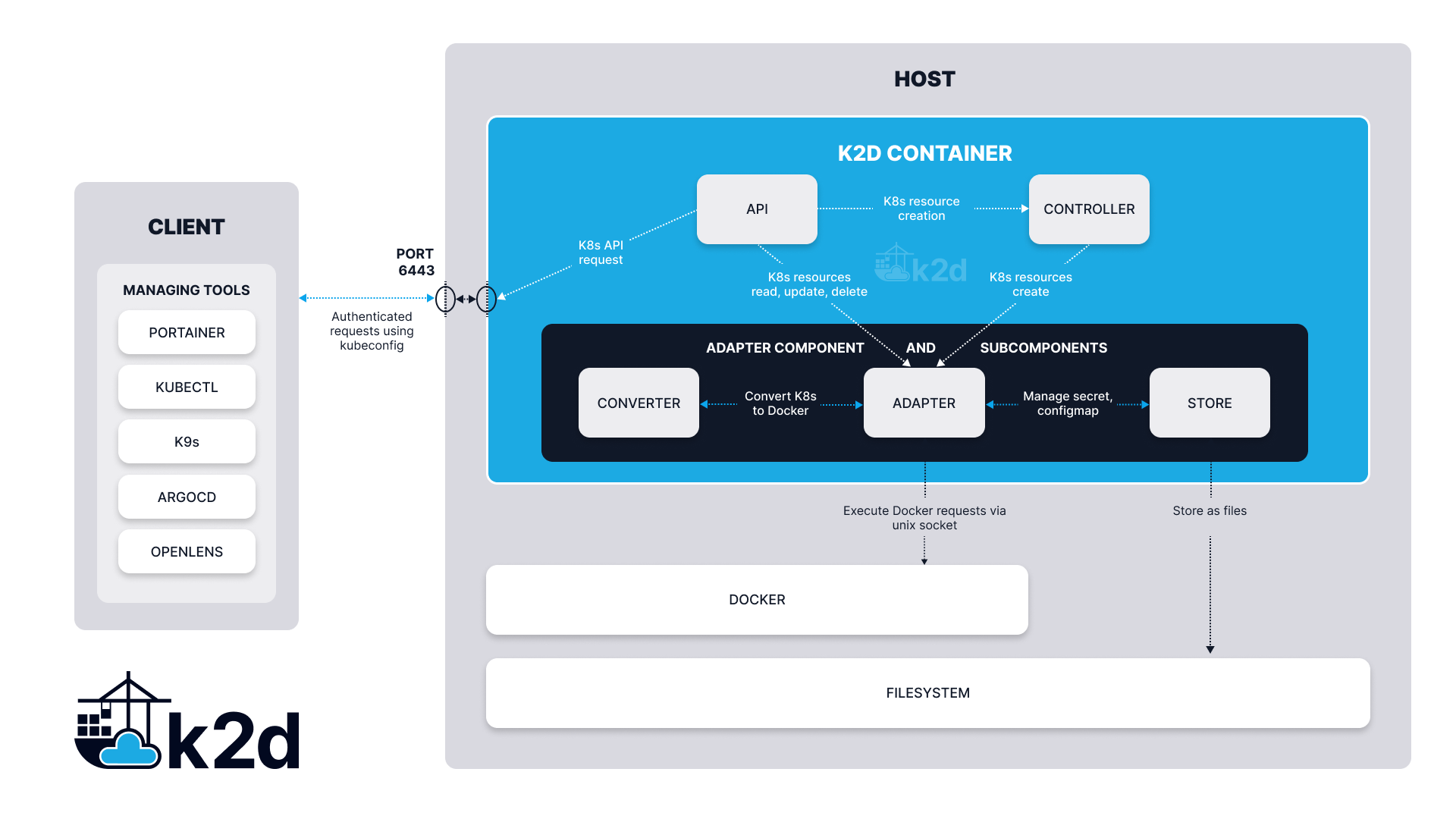
Kubernetes without K8s
There are no Kubernetes components to manage, no etcd, no KubeDNS, etc. Only Docker (or Podman) is required.
Industrial IoT Device Support
Linux enabled devices, with as little as 1x 700Mhz ARM32 CPU, 512MB of RAM, and a 16GB SD-Card can be managed as if they are a single-node Kubernetes instance..
Transparent Translator
K2D is a real time translator, which means you can interface with the Docker environment either directly, using Docker commands, or remotely using the Kubernetes API that k2d exposes.
Talks and Videos